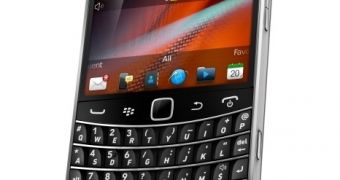Canadian mobile phone maker Research In Motion has just announced that it is now ready to add BlackBerry 7 applications to its mobile software portal, the BlackBerry App World storefront.
The company announced the availability of a new flavor of its platform last month, and also delivered the necessary tool for developers interested in coming up with software for the device.
Now, the handset vendor wants to make sure that the developers will have applications ready for the new OS iteration in time for the release of its latest smartphones.
“Now that BlackBerry Java SDK v7.0 is available in BlackBerry Developer Zone, it’s time to start getting your apps ready for BlackBerry 7 in order to ensure that you’re ready to support the new BlackBerry Bold 9900 and BlackBerry Bold 9930 smartphones at launch,” RIM notes in a blog post.
Developers already distributing applications through the BlackBerry App World should log to their vendor portal and select the applications they would like to be visible for smartphones running BlackBerry 7, as the move won't be made automatically.
“So, now’s the time to start testing, updating, and posting your apps for BlackBerry 7 to be ready for launch,” RIM notes.
To ensure that applications will provide the greatest experience on the new devices, developers can test them on similar handsets that are already available on the market, and the Torch is said to be the handset closest to the new Bold 9900, since it has both type and touch capabilities.
Both phones are half touchscreen, half keyboard, both have track pad, phone keys, menu key and escape key, but the BlackBerry Bold 9900 will not show a soft QWERTY keyboard like the already available smartphone.
Developers should also verify the resolution at which their application was meant to work, as the BlackBerry Bold 9900 Series comes with a 32-bit color display that can deliver 640 x 480 (landscape) resolution (unlike Torch, with 16-bit and 360 x 480 resolution).
Other aspects that developers should look into include the application’s icons, which should be of 92 x 92 pixels in size for the new OS.
Moreover, there are also a wide range of new APIs that BlackBerry 7 came with, and which can enable developers provide users with new experiences while on the go.
Some of these APIs include (the complete list is available here): - OpenGL ES 2.0 for creating rich, hardware accelerated graphics. - Window Manager for overlaying graphics on top of native screens such as camera viewfinder or video playback screens. - Compass API, leveraging the new magnetometer sensor. - Near Field Communication (NFC) APIs, leveraging the new NFC radio. - Video capture APIs for HD video recording. - Send Menu API, allowing apps to share content with contacts the same way that core apps do, by adding a “Send…” menu to their apps. - BlackBerry Maps API updates for creating rich overlays on top of maps. - Geofencing API, getting notifications of a user entering or leaving a given area. - BlackBerry Balance API for separating business data from personal data. - Barcode API updated to ZXing 1.6 and support added for creating custom decoders.
After ensuring that the application can easily become a superapp, and that it would take advantage of the services BlackBerry 7 comes with, developers should test the software to ensure it is fully compatible with the upcoming devices, and then they are clear to submit the product to the BlackBerry App World.
The BlackBerry Java SDK v7.0 beta is available for download from the BlackBerry Developer Zone here.

 14 DAY TRIAL //
14 DAY TRIAL //